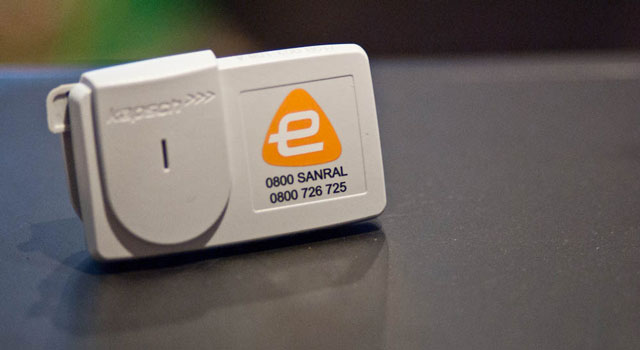
Roads agency Sanral is fabricating e-tag sales figures, the Opposition to Urban Tolling Alliance (Outa) said on Wednesday. Outa claims Sanral has sold less than half of the number of e-tags than it claims it has.
“Based on a statistically sound sample size, Outa’s research shows that only 15% of freeway users are tagged and 9% of vehicles counted off the freeway were tagged,” chairman Wayne Duvenage said in a statement.
“Obviously, it is the freeway-user count that matters in this exercise, but the off-freeway count helps to corroborate our findings.”
Earlier on Wednesday, Sanral spokesman Vusi Mona said: “Currently 890 388 VLN/e-tags have been committed.”
Outa’s research showed, of a sample of 2 098 cars which used the freeway, 317 had e-tags which equalled around 15,1%.
Of a sample of 2 236 cars which did not use the freeways, 212 had e-tags, equalling around 9,5%.
Duvenage said given that around a third of cars in Gauteng did not use the freeway, it was expected the non-freeway figure would be lower.
Applying the sample to the total number of cars which used Gauteng’s freeways every month, being around 2,3m cars, Outa believed the number of e-tags sold was only around 350 000.
“Even if one pushed the e-tag penetration rate to 20%, the number of e-tags in use will be no more than 450 000,” Duvenage said. “That is around half the number of tags sales recently espoused by Sanral.”
He encouraged the public to do e-tag counts themselves if they did not take Outa’s word for it. “E-tags are easy to see, especially at traffic lights on freeway off and on-ramps and in car parks of shopping centres,” Duvenage said. “This Christmas, there is a new game for your kids while travelling around Gauteng — spot the e-tag.”
Outa called on Sanral to come clean and provide the actual e-tag count passing under the toll gantries.
The e-tolling of Gauteng highways started last Tuesday. Mona said the implementation of e-tolling had gone according to plan.
Motorists without an e-tag had seven days to pay for the use of the tolled roads in Gauteng. After the seven-day period, the transactions were processed and invoices issued.
“The first seven days of toll collection on the Gauteng e-roads only came to an end last night, and it is therefore too early to report on the issuing of invoices for those e-toll transactions that have not been paid within seven days,” Mona said. “However, so far the internal processes have been running smoothly.”
He said it should be noted that the legal obligation to pay e-tolls arose from using the tolled roads and passing underneath a toll gantry. “The legal obligation to pay toll[s] therefore does not arise from an invoice that is forwarded to a user,” he said.
Mona said 42 of the 45 toll gantries were fully operational. “The last three gantries will become operational shortly,” he said.
Equipment on these three gantries could be fitted and calibrated only once the construction of the road had been completed. — Sapa

